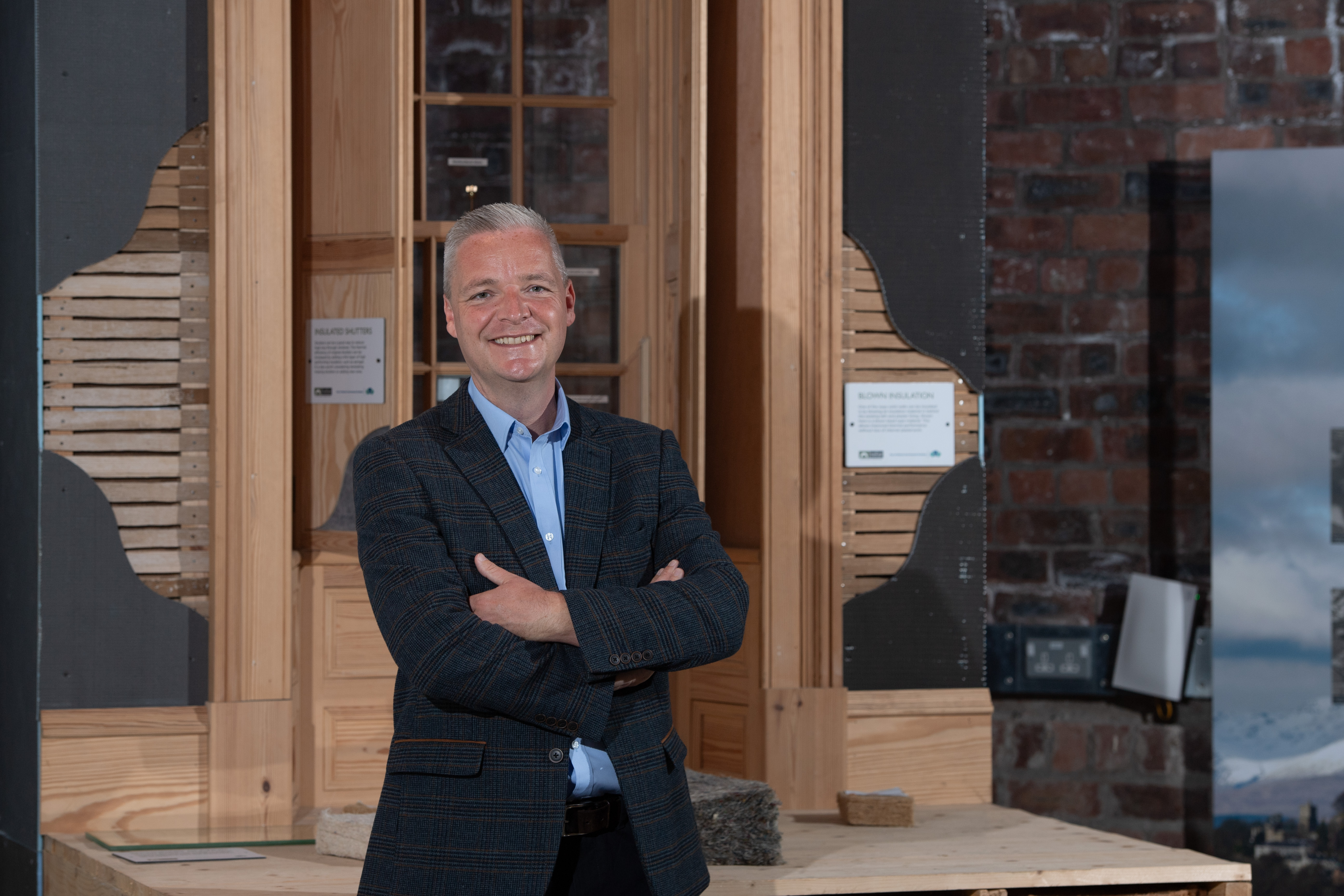Getting retrofit right

Energy Efficiency training from Historic Environment Scotland.
“We have to get energy efficiency right, or we won’t reach net zero.”
Moses Jenkins is a Sector Skills Manager at Historic Environment Scotland. He teaches the organisation’s Energy Efficiency Measures for Older & Traditional Buildings.
A Level 3 Award, it’s aimed at a wide range of professionals advising on energy efficiency including contractors, installers, architects and surveyors as well as advisory bodies such as the Energy Savings Trust.
Figures show 2.25 million homes in Scotland need to move to low carbon heating with 895,000 of those defined as tenements.
Moses said, “The course covers the basic principles of making traditionally constructed buildings energy efficient with a focus on insulation, window improvement and how to bring in renewable technology, as well as an understanding of how to balance that work with the heritage of the building.
“Any measures that are introduced need to work for the building itself, or you could end up with mould and decay problems.
“Even something like insulating a loft, it may seem like an obvious way to improve heat retention, but if not planned and installed carefully it can risk condensation, causing moisture levels to rise in roof timbers potentially leading to rot and decay.
“Ventilation is critical to retrofit. We always start with ventilation and moisture, because the aim is to make sure the building is thermally efficient and the people inside stay warm and healthy.”
The course takes 16 candidates at a time and is having a big impact on participants.

Jonathan Bourke, Director or Retrofit at Harvey Donaldson & Gibson chartered surveyors, completed the training in spring 2022.
Jonathan coordinates retrofit projects from colleagues across the country, checking the quality of submissions and ensuring best practice.
He said: “It drove home to me that you can’t prescribe one way to retrofit a building, every building and home is unique and used differently by its occupants, that’s especially true when you look at older housing stock.
“You have to look at the building’s overall heritage, setting and location, to ensure energy efficiency installations suit each building.”
Chartered surveyors will be increasingly in demand as Scotland aims to be net zero by 2045. As the number of buildings making changes to meet requirements increases, so too will the need for Retrofit Coordinators to oversee and approve work.
Jonathan added: “We are always looking to get young people and career changers into the industry, reflected in our recent recruitment of two Graduate Surveyors.
“Surveying is flexible, gets you out and about visiting many different locations and buildings, meeting varied customer demands and you’ll also be contributing to the fight against climate change.”
Elaine Ellis, Skills Development Scotland Skills Planning Manager for Construction, said: “We will need a highly skilled workforce to make improvements to traditional buildings which includes many of our flats and houses, including our iconic tenements, to get them ready for net zero. Upskilling the existing workforce and bringing in a future workforce is equally important.
“There are many challenges given the nature of the construction industry but we continue to work closely with partners across the historic environment to support skills planning, including working with Historic Environment Scotland to update a skills action plan to support the built heritage sector through multiple areas including Apprenticeships and career awareness.”
Moses added: “I think when we talk about heritage buildings, or traditional building stock, people often think of castles, listed buildings. Nineteen percent of our domestic stock is traditionally constructed, that’s around 1 in 5 houses.
“These buildings are a tremendous resource that have lasted in excess of a hundred years, so there’s no reason why with energy efficiency improvements they can’t provide safe, warm homes for another century and beyond.”